
This is an article about women during the progressive era responding to the problem of child labor.
- Subject:
- History
- U.S. History
- Material Type:
- Diagram/Illustration
- Provider:
- Library of Congress
- Date Added:
- 05/22/2017

This is an article about women during the progressive era responding to the problem of child labor.

Students learn how newspapers got started, what components are necessary for creating a good newspaper, and what is included in the basic structure of a news article. They will examine historical newspapers from several eras and then compare them to today's newspapers. Students will then take on the role of a journalist and write a news article about a hot topic or current event.
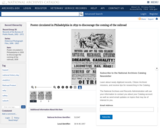
Poster circulated in Philadelphia in 1839 to discourage the coming of the railroad, 1839
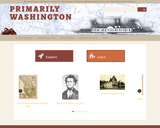
Primarily Washington is the Washington State Library, Washington State Archives, and Legacy Washington's way of bridging the gap between the primary sources in our collections and the classroom. The State Library's goals include actions to promote education and life-long learning, as well as connect Washingtonians to their history. This portal will contribute to these efforts by containing content that will consist of digitized primary sources that have been partnered with curriculm developed by Washington State teachers. There are also featured exhibits for further study by students and all others wishing to learn more about the history of the Pacific Northwest.
Note: These primary sources include materials that reflect the attitudes, perspectives, and beliefs of different times. These materials are presented as part of the historical record. Inclusion of these materials does not mean endorsement of or agreement with any views expressed. But they provide opportunities for examining multiple perspectives, generating discussions and comparing and contrasting points of view over time.
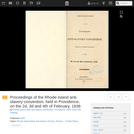
Pursuant to a call signed by eight hundred and fifty citizens of Rhode Island, a large number of gentlemen, friendly to the immediate abolition of slavery, assembled in the High Street Congregational Meeting House in Providence on Tuesday, February 2, 1836.

This lesson covers four important lawsuits brought by Asian Americans with important consequences for American citizenship, equal protection, and racial identity: Yick Wo, Wong Kim Ark, Takao Ozawa, Bhagat Singh Thind.
2021 Social Science Standards Integrated with Ethnic Studies:
Civics and Government: 6.4, 7.5, 8.7, 8.8, HS.1, HS.2, HS.6, HS.11
Historical Knowledge: 5.22, 6.20, 6.21, 8.22, 8.25, HS.52, HS.58, HS.63, HS.64
Historical Thinking: 5.24, 6.23, 7.25, 8.31, HS.69, HS.70
Social Science Analysis: 5.26, 5.27, 6.24, 7.27, 8.36, HS.72, HS.73, HS.74, HS.78

This lesson focuses on early Asian immigrants to the United States, their reasons for immigration, successes they experienced, challenges they faced, and the changing reception they received in their host country. Students will learn what an immigrant is, what it means to be an “American, what the American Dream is, and how primary sources and secondary sources provide varied perspectives that inform a deeper understanding of an event.
2021 Social Science Standards Integrated with Ethnic Studies:
Civics and Government: K.1, 3.2, 5.1
Historical Knowledge: 2.16, 5.22
Historical Thinking: K.17, K.18, 2.22
Social Science Analysis: 1.19, 1.21, 3.18, 3.19, 4.24, 5.27
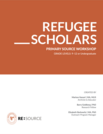
The workshop asks students to consider what foundations can do in times of global crisis by placing them in the role of Rockefeller Foundation (RF) program officers during World War II. As were the real program officers, students will be tasked with selecting a limited number of scholar applicants for aid in a life-threatening situation. Working in groups, students will read documents related to ten scholars who represent a variety of nationalities, backgrounds, and scholarly disciplines. Students will then select four candidates, and must be prepared to articulate the reasoning behind theirdecisions. This exercise enables students to imagine and grapple with the difficult choices RF officials had to make in one historical example of how foundation philanthropy has responded to humanitarian crisis. Students are encouraged to use this exercise as a springboard for further research into current scholar rescue initiatives, and/or policies and practices pertaining to refugees today.
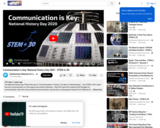
Learn how key communication is in the space and aviation industries. Hear first hand from experts their thoughts on communication and learn the science behind communication.
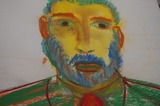
By the mid 1960s, Americans’ interpretation of the Civil Rights Movement was split. While many white Americans perceived laws like the Civil Rights Act and Voting Rights Act as solving the problem of segregation and civil rights, the experiences of many black Americans proved that there was still a great discrepancy in their treatment, opportunities, and economic status. The philosophy of black nationalism, which argued for …, grew in influence during this time. This lesson examines how black nationalism impacted not only the larger aims of the civil rights movement, but institutions like schools, universities, local economies, and the arts.
This lesson is organized as a warm up quote and mini-lecture to affirm student understanding of black nationalism and the ongoing struggle faced by black Americans even after many civil rights “milestones.” Students will then explore in a gallery walk/station format the different ways that black nationalism impacted society in the late 1960s and 1970s. Depending on time, teachers may want to have students visit multiple stations or focus on one and then share findings with the class. A final class discussion will ask students to compare their findings and to find connections with our society today.
Many of the sources in this lesson were found in the August Wilson archives at the University of Pittsburgh. August Wilson was a Pittsburgh playwright whose work chronicled the experience of black America, and the sources found there speak to both the desire within the arts for more artwork about the experience of people of color in the United States and more arts organizations to support it; as well as sources that reflect on the growth within the University of Pittsburgh of a Black Studies program and the Black Action Society, a student group. While local in focus, these changes reflect national movements in the 1960s and 1970s.
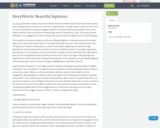
StoryWorks develops inclusive and transformative educational theater experiences that provide students with the opportunity to examine our country’s civil rights history. Through content consistent with school curriculum standards, the program engages students in experiential learning and inspires them to ask deeper questions about the historical underpinnings behind contemporary issues. The process creates pathways to civic engagement, creates lasting memories and instills a tangible sense of social belonging. This StoryWorks educational project is built around Beautiful Agitators, a theatrical play about Vera Mae Pigee, a hair stylist and business owner in Clarksdale, Mississippi, and one of the unsung heroes of the civil rights era. Using her beauty parlor as a hub for Delta-based organizing and resistance, Pigee operated her salon by day and then transformed it into a clandestine center for civil rights organization and education in the evenings. Known for her big hats and larger than life personality, Mrs. Pigee led the direct action that registered nearly 6,000 African Americans to vote in the region. Although Pigee was largely left out of the history books, along with many women of the movement, our play Beautiful Agitators and accompanying curriculum revives her legacy, highlighting her methods and tactics. Inspired by the innovative K-12 civil rights education standards developed by the Mississippi Civil Rights Commission. Our commitment is to expand upon the standards by further developing content related to social justice, power relations, environmental justice, diversity, equity, mutual respect, and civic engagement. Beautiful Agitators combines inquiry with higher-order thinking skills of analysis, evaluation and synthesis. Set in a beauty parlor owned and operated by a Black woman in the Mississippi Delta, our curriculum is based on our investigation into primary sources and their relationship to critical moments in the national movement. This foundation of historical context allows for students and educators to find contemporary parallels which further engage learners to reflect upon the legacy of the civil rights movement and the struggles that we, as citizens, continue to grapple with today.View the complete play Beautiful Agitators on the StoryWorks Theater site.Implementation1. Beautiful Agitators Performance Classroom watches a prerecorded, staged reading of the play Beautiful Agitators, which was created and performed by artists from the Mississippi Delta, home of Vera Mae Pigee.2. Lesson Plan Activities Following the eight-lesson plan structure, students will read aloud or act out scenes from the play. This participatory interaction with the text and the historical events promotes a high level of engagement from the students and encourages experiential learning. These activities directly correspond to scenes in the play and to specific content area standards. Teacher leads guided discussions and helps to explain the historical context and theme of each scene. Students/actors have the opportunity to share their experiences having portrayed these historical figures.
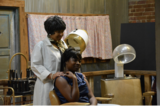
Through the play Beautiful Agitators and accompanying curriculum, students will eplore the life of Vera Mae Pigee and reflect on the struggle and sacrifice that led to the Voting Rights Act of 1965.

The Tuskegee Airmen played a pivotal role in World War II while battling prejudice and segregation to African Americans. This lesson will allow students to research and examine various primary source documents to learn what contributions the Tuskegee Airmen made to American society. Students will listen and read about the Tuskegee Airmen through research and videos while providing evidence to various guided questions. The students will then create journal entries as to what it might have been like to be a member of this famous group on their first day of training and on their first flight mission.
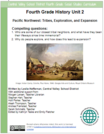
The unit has two parts. In each, students dive into inquiry to answer the compelling questions:
1. Who are some of our closest tribal neighbors, and what have they been their lifeways since time immemorial?
2. Why do people explore, and how does this lead to expansion?
Part 1 is focused on the examination of the northwest and some of the original inhabitants. Through these questions students will learn about the culture of some of their closest tribal neighbors, the Spokane Indians. The final project for Part 1 is a cultural investigation display, in which students will show what they know about the culture of the Spokane Tribe.
In Part 2, Students will also learn about forces that brought change to the northwest: fur trade era and exploration. Students will ultimately learn about the Corps of Discovery and the Oregon Trail and know the impact each had on the west. Students will finish Part 2 with a timeline activity that will reflect choice and build upon student strengths according to their skill set.
Finally, a lesson on a Tribe of the Columbia Plateau is offered as an extension, but it is strongly recommended that students get to experience this lesson.
Note that the emphasis here is on the Spokane Tribe as one of our closest tribal neighbors. In no way is this an exhaustive study nor should the tribal cultures be generalized to other tribes of the region. We understand that each tribe in our region and North America was and continues to be unique in its culture, practices, lifeways, and traditions.

Using a literature review and primary sources that were part of the review, students examine data to evaluate if this data can predict future life choices. Students will learn content in Math, Biology and Language Arts during this literacy-based lesson that supports students in using textual evidence to develop and support claims.
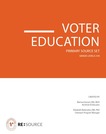
Table of Contents:3. How To Use This Primary Source Set4. Historical Context7. Document Guide8. Primary Sources21. Guided Questions22. Primary Source Projects24. About Us
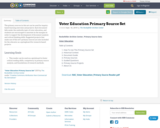
The primary sources in this set can
be used for inquiry-based learning exercises
and projects. Each document falls under the
umbrella topic of voter education, and students
are encouraged to annotate in the margins in order
to support the development of document analysis
and critical thinking skills. Suggested projects that
make use of this set’s primary sources are also
included for the educator as a springboard for
research-based projects.
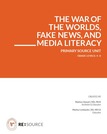
The following unit offers multiple entry points into developing an understanding of media literacy. The unit framework and primary sources can be integrated into classrooms of grades 4-12. Each lesson has student objectives that can be accomplished within 40 minute periods over the course of several weeks. A midpoint writing assessment, whole class capstone debate, and final independentwriting assessment are included. Support materials are integrated into the lessons, and the primary source document pages can be found at the end of the unit guide.
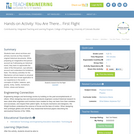
Students learn about archives and primary sources as they research original historical documents. While preparing an imaginative first-person account as if witnessing an historical event, they learn to appreciate the value of the first-person, eye-witness account and understand its limitations. Note: The literacy activities for the Mechanics unit are based on physical themes that have broad application to our experience in the world â concepts of rhythm, balance, spin, gravity, levity, inertia, momentum, friction, stress and tension.